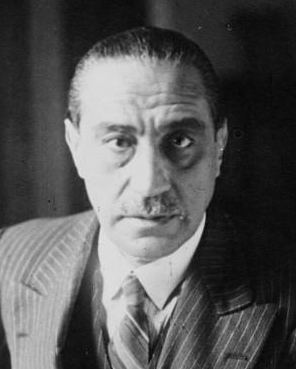Name Miguel Maura Role Spanish Politician | ||
 | ||
Parents Antonio Maura, Constancia Gamazo y Calvo Siblings Gabriel Maura Gamazo, Susana Maura Gamazo, Honorio Maura y Gamazo Grandparents Bartolome Maura y Gelabert, Margarita Montaner Llampayes Nieces Julia Maura, Maria del Carmen Maura y Herrera Similar People Antonio Maura, Gabriel Maura Gamazo, Jorge Semprun, Carlos Semprun | ||
Miguel Maura Gamazo (13 December 1887 Madrid – 3 June 1971 Zaragoza) was a Spanish politician of the Restoration and the Second Republic.

Maura was a son of the leading Conservative politician of the Restoration monarchy, Antonio Maura. In 1916 he was elected to the Cortes by the district of Alicante.

At first a supporter of the dictatorship of Primo de Rivera he moved from a monarchist position towards a moderate republicanism. He jointly founded, with Niceto Alcalá Zamora, the Liberal Republican Right (DLR), on 14 July 1930. The DLR looked to capture the centre ground of Spanish politics and mobilize mass support for a non-revolutionary republican regime. "Despite their sincere and undisputed Catholicism the party's two most prominent figures had abandoned monarchist constitutionalism for republicanism in 1930; their betrayal of the king's cause was completed in August when they joined other republican leaders in the Pact of San Sebastian. To the traditional Catholic right, this republican pact which was committed to negotiating with socialists, communists and anarcho-syndicalists was evidence that Maura and Alcala-Zamora had gone over to the other side."
When the Spanish Second Republic was proclaimed in April 1931 Maura became minister of the Interior in Zamora's provisional government. He was in this position on 11 May 1931. Following a monarchist provocation on the previous day when the royal march was played to the crowds coming away from their Sunday paseo in Madrid's Retiro Park an outburst of mob violence against the Republic's perceived enemies led to the burning of churches, convents and religious schools in the capital. Despite the protests of Miguel Maura - who as minister of the Interior was ultimately responsible for public order - the government refused to intervene and the fever of anticlerical incendiarism spread rapidly around the country - Murcia, Málaga ( the most extensive damage occurred in this city), Cadiz, Almeria. The events of 11 May came to be seen as a turning point in the history of the Second Republic. José María Gil Robles for example, claimed to regard the convent burnings as 'decisive'. He claimed that the fires of 11 May destroyed the precarious coexistence which had been established between Church and State. (Indeed, Gil Robles persisted in seeing the burnings as the result of planned and co-ordinated action by the republican government. The liberal catholic Ossorio y Gallardo also believed in the likelihood of conspiracy - but as the work of monarchist agents provocateurs.) "From now on", wrote Ossorio, " the right was utterly opposed to Maura as if he, a sincere Catholic, had been responsible for burning churches." Gil Robles was one of the prime beneficiaries of Maura's discomfiture and one of the first to capitalise on it. Following the 1931 Constitution with its anticlerical clauses Maura (on 14 October 1931) and Alcalá-Zamora resigned - though their resignations did nothing to reconcile them to the agararian Catholic right. The position of the Catholic republicans was an isolated one.
In 1936 Maura left Spain to France. He returned in 1953. In 1962, he published his book Asi cayó Alfonso XIII. The actress Carmen Maura, celebrated for her roles in the films of Pedro Almodóvar is related to Miguel Maura.
